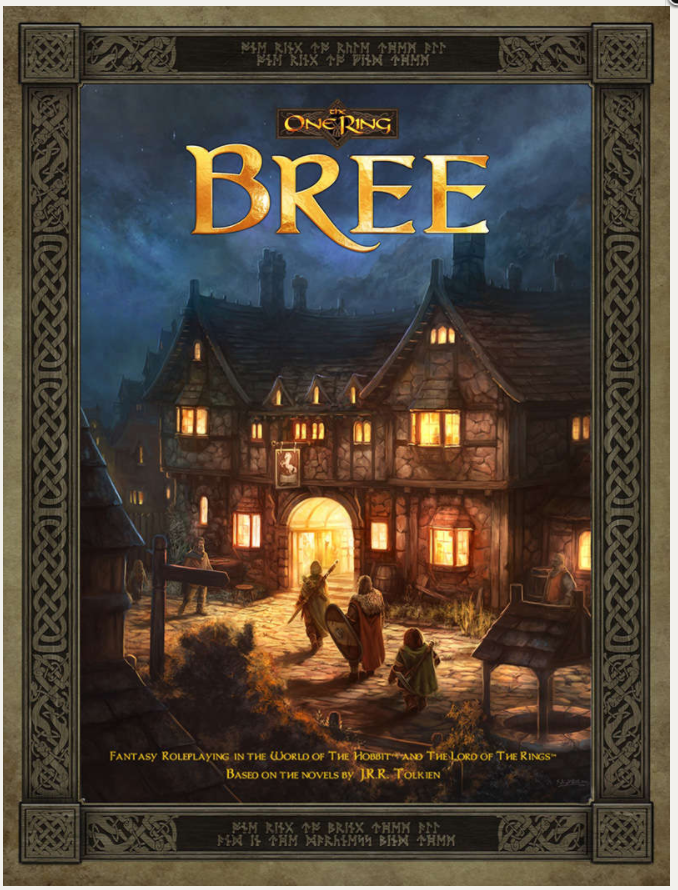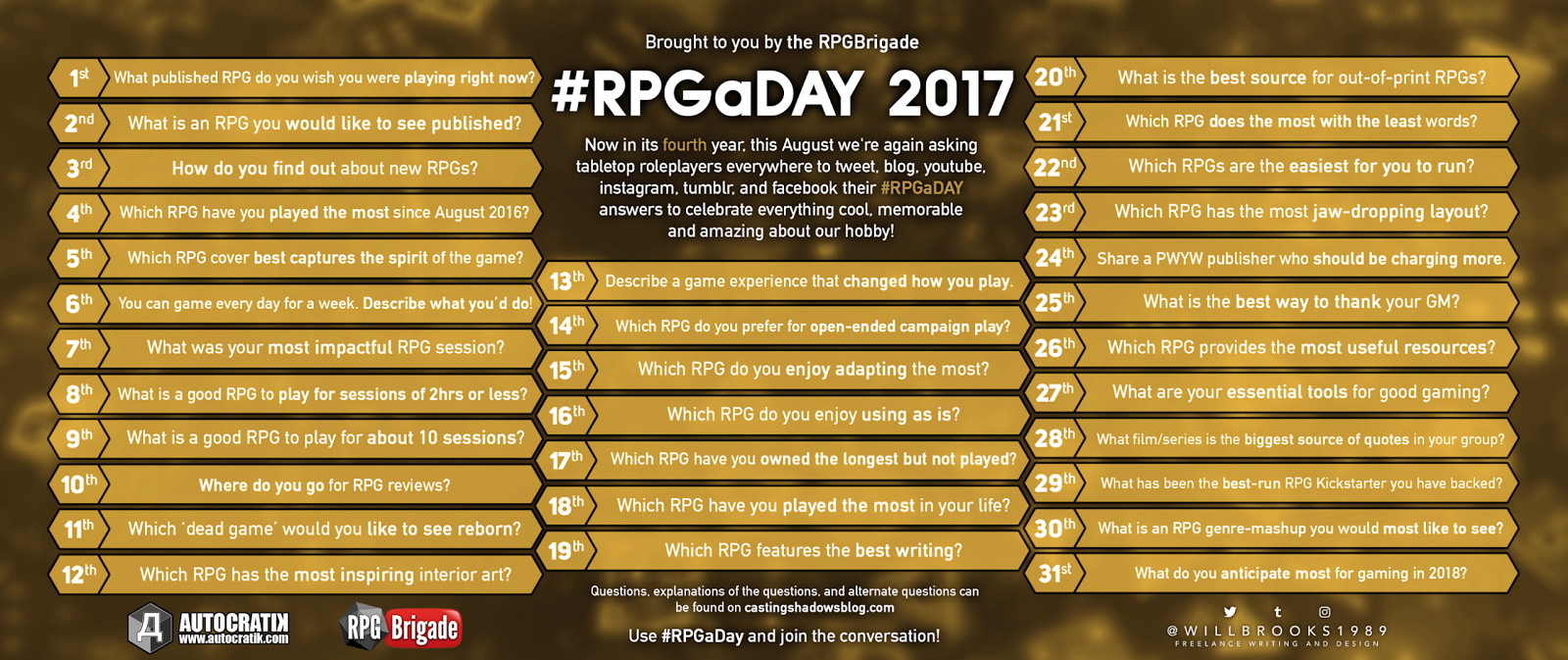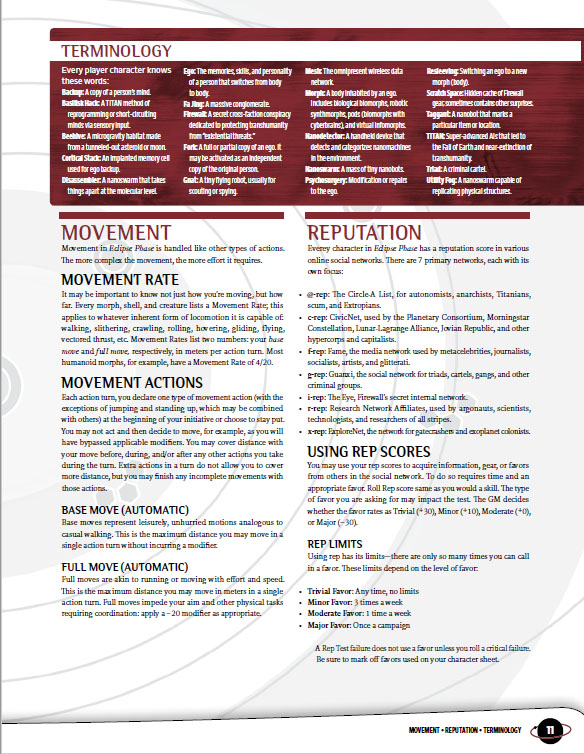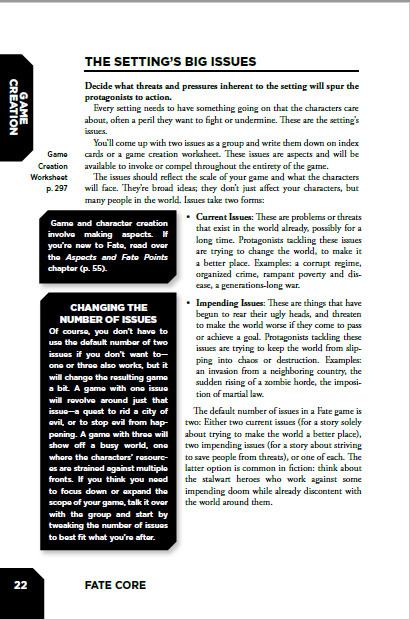Vignettes. These small story bits were originally used in the Iron Wind and have been a mainstay in subsequent Shadow World books. I think the use of vignettes as journal entries, 1st person narratives, or book excerpts really breathes life into Shadow World. Glancing though the books you can see the start of Kalen and Jad that Terry spun into a full length book, The Loremaster Legacy. Take this short narrative found in the Master Atlas p. 152:
Half a dozen men waited on the Haalkitaine dock holding mooring ropes, keeping the skyship Starwind from drifting. The Navigator Sulfean stood at the ships’ railing, staring into the sky.
“How soon before we can depart?” Randae asked the captain.
“Momentarily. I will not be rushed,” the tall Laan woman snapped, then turned to her first mate. He stood with another man at a windlass, one hand on a nearby lever. He nodded to her, tightening his grip.
Sulfean strode quickly to stand by Randae and the captain. “We must leave at once!”
On his usually expressionless face Randae thought he detected a faint betrayal of —uncertainty? Fear? Impossible.
Captain Nankara looked annoyed. “Navigators! He forgets who the captain is here,” she muttered. But a moment later a crewman called the ‘all ready’ from the rigging. Nankara rang the final ascent warning bell and braced herself at the wheel.
“Stage One!” She called out. The mate pulled the lever, then he and the other crewman began to slowly turn the windlass. The ship trembled as a system of pulleys and gears and chains controlled the unfolding of the Xenium plates towards the bottom of the Starwind’s hull. After two full turns they stopped. Meanwhile, Sulfean templed his fingers, obviously concentrating on a spell. A faint blue-violet aura danced along his hands. He thrust his palms out and forward, and translucent rays of light fanned outwards, splashing over the sails and the crew, and finally swirling around the ship like a huge, ethereal soap bubble. The Starwind creaked
and bobbed upward, rising perhaps twice a man’s height, then held steady by the mooring ropes.
“Stage Two!” Nankara’s voice cut through the night, and the first mate cranked the windlass around again, while crewmen extended the ventral sail spars and began to unfurl the mainsail.
Then the world ripped apart.
From the northwest came a flash of lurid green lightning. For an instant it turned the night to eerie day, illuminating everything in stark light and shadow. There followed utter silence and darkness for the space of perhaps three heartbeats, during which everyone was frozen in surprise — except Sulfean. He alone fully understood what that flash foretold, even as he felt his spell of Wind Mastery torn from his grasp. The Tall Elf braced himself and, turning towards the lightning, called upon the full
power of his Compass.
While not as knowledgeable in such matters as Sulfean, Randae had a pretty good idea of what was about to happen. He grabbed the nearest railing and shouted “Hold on!” At the same time, Nankara and her mate heard Sulfean’s urgent thought voiced in their heads: Drop the panels to Stage Five and come hard around to the west at once!
Next came deafening thunder, a sound so loud as to press against your very eardrums. The first mate released the windlass and the Starwind lunged upward and spun, tearing the mooring ropes from the dockmens’ hands.
And finally the wind: like a great hammer it smashed into the aft port side of the ship just as she was turning with it — and that is possibly what saved her from capsizing. Even so, her structure protested with awful creaks and groans and she pitched prow down and hard to starboard, lurching forward and earthward at a terrifying angle towards the docks.
Men on the rigging were tossed about like rag dolls — and one crewman was thrown from the foremast, falling towards certain death on the pier.
But Sulfean, bathed in a shimmering radiance, thrust his hands out and up, sending a surge of light out to engulf the plummeting ship. Then with one hand he reached forward as if to grasp something: a filament of light whipped out from his fingers to ensnare the tumbling crewman and stop his fall. Tto those on the ship the gale seemed to die away, while Starwind’s descent slowed and her bow came up.
Randae clutched the balustrade, wishing he could help but knowing that he dare not try magic in this storm; it could backfire and endanger the Navigator.
Slowly… slowly the ship leveled off and turned, encased in an iridescent sphere of Essænce. Sulfean drew the semiconscious crewman in and lowered him onto the deck, where his mates ran to help him. It was about that time the snow began, like a wall of white outside the sphere, yet only a few flakes drifted inside. Finally the Navigator relaxed a bit, shoulders slumping as the sphere around the Starwind dimmed to a phantom glimmer.
Randae approached him slowly. “That was spectacular.” He said softly. “Thank you.”
“Not as spectacular as my fee.” The corner of Sulfean’s mouth twitched just a bit. “But now that things are under control, I am a bit tired. I shall be in my cabin.” He pulled his black cloak over his shoulders and strode away.
From ShadowStorm, Part One
While it’s only a page long, the short scene allows Terry to provide quite a bit of information that GMs can use in their SW games:
- Visualization of the operation of a skyship and the docking system in Eidolon.
- The role of a Navigator.
- Insight into personalities/behaviors of key people (Navigator and Loremaster).
- Spell manifestations and Essaence eruptions.
While I’m not even close in writing skill, I like to follow Terry’s example of including vignettes to add atmosphere or exposition.So I’m finishing up the Book of the Pales, a GM guide for using the Pales in Shadow World. As a writing challenge, I wanted to create a scene that imparted information with the fewest words possible. Here is a bit from the Book of the Pales that touches upon the first Althan experiments into accessing other dimensions…
Log 1458.223. System Initiation.
Log 1469.190. All Systems Check
Log 1473.565. Zero Point Telemetry Confirmed.
Log 1538.329. Power Fluctuation Normal.
Log 1577.838. Door access. ID Check 581. Dr. Orwen D’Coste.
Log 1882.110. Door access. ID Check 275. Dr. Presam Dvora.
Log 2355.661. Quantum Foam Injection Confirmed.
Log 3202.992. Power Load Stable.
Log 3876.222. Quantum Brane Active.
Log 4789.830. Quantum Brane Penetration Detected.
Log 5391.312. Unknown Biology Detected.
Log 12435.439. ID 275 Terminated.
Log 1731.912. ID 581 Terminated.
Log 2123. 378. Emergency Quarantine Protocols Activated.
END
Physic Lab #13 Subroutine Monitoring Log.
I also use vignettes extensively in Priest-King of Shade. Here is a short passage that was inspired by Terry’s passage I cited above:
A cool wind whipped across the water churning up whitecaps, the vanguard of the fast approaching storm-front of menacing dark clouds and flickering lightning. The Navigator Turo Vekaram stood at the prow of the ship calmly studying his compass, but his unhurried movements did little to calm the fears of the crew and passengers. The ship was fast, but by now it was clear they would not outrun the storm. The navigator let out an almost imperceptible sigh, his normally implacable Dyari features revealed resignation…and perhaps a flicker of fear.
“I’m afraid there is little I can do now Captain, this storm appears to be an abnormally strong manifestation of the Essænce. I have neither the ability nor the power to save the ship–we are at the mercy of the Lords.”
The Captain paused, considering the Navigator’s assessment. Turning to his helmsman he began to relay his orders, “Steersman, four points….”
Suddenly, a shout erupted from one of the crew pointing towards the storm. The last few rays of sunlight pierced the roiling clouds, and glinted off a thousand dazzling points. The Navigator squinted, his brows furrowed in concentration as he tried to discern the source of the luminescence. One of the passengers screamed as the threat became clear. Hundreds, perhaps thousands, of crystalline insects were skimming over the water directly towards the ship….The Swarm had arrived.
Excerpt from the travel journal of Caylis Deveran
Nomikos Reference: Travel; Barrier Sea. Section 14.7
And here is one of my personal favorites I wrote quite a few years ago. Via this narrative scene, I wrapped up quite a few questions I wanted to answer in my own SW campaign: What happened to the Earthwardens? Where did the Dragonlords come from? Who is the Storm Wizard etc.
We stood silent; a circle of shadowed figures swathed in simple brown robes. Above us the ceiling of the vast cave soared into flickering darkness among the stalactites. The only light came from the coruscating glow of the vast pool in the center of our circle. Crude steps carved from the living rock led down to the edge of the churning Jewel Well: it’s power radiated out in waves that buffeted us like blasts from a forge.
At the top of the steps stood a solitary figure similarly garbed in plain brown. Jrek Okentu, leader of the remaining Earthwardens. Next to him was a wide pedestal of black stone, the flat top adorned with rows of jagged crystals, each pulsing, as if in answer to the scintillating Essence Well.
“Brother and Sisters. For countless years we have labored as healers and guardians of this scarred planet. We have achieved much and left talismans to protect future generations, but it has been costly. We have lost many friends, and our time is ending. Most of our order has long departed this world, now, only us few remain. Should we stay, we would
continue to diminish, challenged by the remnants of our ancient brethren and the new powers that call Kulthea home. We gather here, our new birthplace, for our final act: a journey to become immortal guardians of Kulthea, imbued with its very Essænce”.
After a weighted silence, Jrek carefully selected one of the crystals and beckoned to the nearest robed figure. Stepping forward the chosen man shrugged off his robe and stood naked before Jrek and accepted the crystal.
“With this acceptance you are born anew. I name you Ssamis T’zang, Wind’s Fury”
The naked figure eyed the Well in trepidation for just a moment and then, gathering his will about him like armor, he
strode down into the bubbling pool, until his head finally disappeared below the surface. We knew not what to expect, and a humming of power washed over us all. Slowly, a shape rose out of the pool: higher, and higher it loomed over us. A long sinuous neck of iridescent scales glistened in the light, and a shadows spread out from the lithesome form. The creature’s wings unfurled, casting jagged shadows across us.
A Dragon had been Born. One by one, each accepted a crystal and entered the Well to be reborn…emerging, growing, and spreading their wings….
Finally, when the last of the outer circle had passed, Jrek turned to look at us, the last remaining few. Gesturing to
the podium and the few remaining crystals that lay there he addressed us:
“For you, my closest, most trusted companions, I offer you these last remaining jewels. Long have I labored over their investiture, for you that stand so high in abilities and my esteem. With our ascendancy we ensure our stewardship of Kulthea, immortal guardians of the Essaence and one with the Flows.”
The first of us stepped forward, her robes slipping from her shoulders. She was a tall woman of black flowing hair and flawless alabaster skin bathed in the scintillating lights of the Jewel Well. She stood for a moment contemplating the crystals, and after a moment Jrek picked up a long slender crystal black in color. Light flickered and peering deep into
the shard she could discern a shadowy form of wing and claw.
Jrek dipped his head and handed her the crystal. “I name you Ulya Shek, Black Queen” he intoned, touching her forehead as he spoke. Then without even a backwards glance at us, she descended the steps into the coruscating pool.
One by one they stepped forward… each named in turn…
“…Drul Churk: Green Seer”
“…Vorig Kye: Silver Eye”
“…Oran Jatar: Ice Lord”
“…Sulthon NiShaang: Red Flame”
Finally only I remained. I stepped forward, pondering the cerulean crystal, it’s center swirled with a cloudy blue haze.
Picking up the crystal I felt the shock travel up my arm… though I was most pussiant, my knees almost buckled from the power. It’s power called to me, but I knew my mind and had made my decision. Jrek raised
his hand and began to speak.
“ I name you Riin Awduu “Sky Storm”
I shook my head.
“I must refuse this gift my brother.” I paused, carefully considering my next words. “ I fear this power will subsume us. We will be lost.”
Jrek beckoned me forth again.
Again I shook my head. “My path no longer lies with you.”
It was all I spoke, and I offered no further explanation. Jrek regarded me for some time, but he noted my resolve and his eyes saddened. He laid his hand upon my shoulder and spoke softly: “You know the path of ascendancy, and the caves of Ssoiayig Saer will lie open for you always. I wish you well.”
Stepping back he raised his own crystal, a shard of soft golden light. “I name myself Kydak Dûm, Sun Sword”.
With those final words he stepped into the Well. Suddenly I was beset with doubts and I turned quickly and left the caves alone, the blue crystal shard still held tightly in my hand.
The Ascendancy of the Earthwardens
Histories, as recorded by the The Storm Wizard
I don’t know if other settings use vignettes, but I think it gives Shadow World added depth and allows a writer to offer information in a more personal way.
Do you have a favorite vignette from any of the SW books?








 There is no art, which is often sighted as one of the real barriers to having great looking books. Art is a real expense I admit. We have discussed that many times and at length.
There is no art, which is often sighted as one of the real barriers to having great looking books. Art is a real expense I admit. We have discussed that many times and at length.
